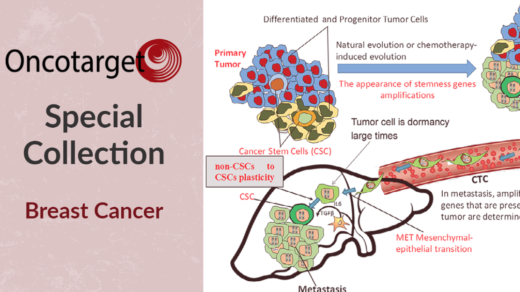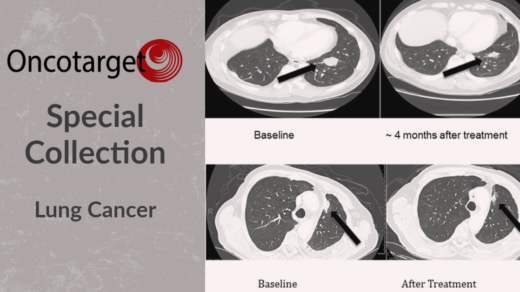Researchers investigated using oncolytic viruses to treat multiple myeloma—alone and in a combination approach.

The Trending With Impact series highlights Oncotarget publications attracting higher visibility among readers around the world online, in the news, and on social media—beyond normal readership levels. Look for future science news about the latest trending publications here, and at Oncotarget.com.
—
Multiple myeloma (MM) is a currently incurable cancer of blood plasma cells. Autologous stem cell transplantation (ASCT) has had efficacious results among eligible patients. However, even after ASCT, a significant number of patients continue to relapse and become resistant to current standard therapies.
A promising new method to treat blood cancers is a form of immunotherapy called virotherapy. Oncolytic viruses are uniquely capable of being reprogrammed to selectively infect and kill various cancer cells without infecting or damaging normal cells in host organisms, including mice and humans. Researchers from Arizona State University, Emory University and the Mayo Clinic (in Scottsdale, Arizona) had previously experimented with using the oncolytic myxoma virus (MYXV) to treat MM. In nature, MYXV only affects rabbits and is innocuous in mice and humans. They found that MYXVs delivered through stem cell transplantation can eliminate some residual MM cells in the Balb/c mouse model.
“Recently, we reported that ex vivo virotherapy with oncolytic myxoma virus (MYXV) improved MM-free survival in an autologous-transplant Balb/c mouse model.”
However, the researchers found that Balb/c mice may not be ideal models for MM. They observed that the behavior of MM in Balb/c mice did not quite reflect the development, clinical manifestation and localization of MM observed in human patients. Therefore, the team conducted a new study of MYXVs in the Vk*MYC transplantable C57BL/6 mouse MM model. Their trending research paper was published in Oncotarget on March 3, 2022, and entitled, “Transplantation of autologous bone marrow pre-loaded ex vivo with oncolytic myxoma virus is efficacious against drug-resistant Vk*MYC mouse myeloma.“
The Study
“In this study, we used the Vk*MYC MM model because it faithfully recapitulates the localization of the myeloma disease within the bone marrow as well as the clinical manifestation of the disease including bone damage (paralysis), renal failure [9, 12].”
A bortezomib-resistant multiple myeloma murine cell line was examined in this study, named Vk12598. Three different strains of MYXV were tested here: vMyx-M093L-Venus, vMyx-M135KO and vMyx-hTNF. The vMyx-M093L-Venus is a wild-type MYXV that expresses Venus-tagged M093 protein as a virion component. The vMyx-M135KO virus is an unarmed and attenuated recombinant MYXV, in which the M135 gene has been deleted and the green fluorescent protein (GFP) has been inserted. The vMyx-hTNF strain is genetically modified, or “armed”, to express human tumor necrosis factor (TNF). TNF is a cytokine that induces apoptosis in various cancer cells.
First, the researchers examined the in vitro ability of these three MYXVs to bind to the Vk12598 cells in culture media. These results were then tested in vivo by first injecting the C57BL/6 mice with Vk12598 cells. Vk12598 cells were seeded for three weeks to allow the MM to progress in the mice. Then, some mice were treated with either cyclophosphamide (a common chemotherapeutic drug used to treat MM) or the compounds LCL161 and α-PD-1. Next, bone marrow cells were loaded with either vMyx-M135KO or vMyx-hTNF and transplanted into the mice.
The Results
In vitro, the researchers found that all three MYXVs did indeed bind to, infect and compromise the viability of the BOR-resistant MM cells in a relatively short period of time. In vivo, the results demonstrated that, alone, autologous bone marrow leukocytes armed ex vivo with the MYXVs (BM/MYXV) exhibited moderate therapeutic effects against the MM cells. This indicated that BM/MYXV has potential as an adjunct therapy against the MM. While little synergy was observed between Cyclophosphamide (Cy) and BM/MYXV, Cy in combination with BM/vMyx-M135KO delayed the onset of myeloma in the mice more than Cy combined with BM/vMyx-hTNF. The researchers note that these results indicate the TNF transgene may have actually interfered with efficacy.
The authors also observed a better synergistic ability between BM/vMyx-M135KO and LCL161 with α-PD-1 to control the progression of MM. This combination resulted in a significant improvement in survival rates and decreased tumor burden. When surviving mice were re-introduced to Vk12598 cells, the researchers found that they had developed acquired anti-MM immunity.
Conclusion
“Together, we show promising results in terms of therapeutic benefits of delivering oncolytic MYXV via carrier cells from autologous BM transplants, both alone or in combination with LCL161 and α-PD-1 against drug-resistant MM cells in vivo. To our knowledge, these are the first results showing therapeutic benefits of oncolytic MYXV to control and even eradicate established drug-resistant MM cells in a preclinical murine model that has previously shown excellent concordance with predicting clinical efficacy in human MM patients.”
Click here to read the full research paper published by Oncotarget.
ONCOTARGET VIDEOS: YouTube | LabTube | Oncotarget.com
—
Oncotarget is a unique platform designed to house scientific studies in a journal format that is available for anyone to read without a paywall making access more difficult. This means information that has the potential to benefit our societies from the inside out can be shared with friends, neighbors, colleagues, and other researchers, far and wide.
For media inquiries, please contact media@impactjournals.com.




